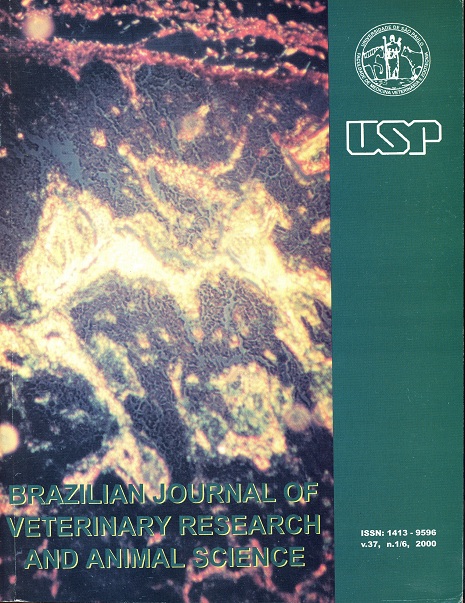Vascularização arterial dos ovários, tubas uterinas e útero em catetos (Tayassu tajacu, Linnaeus, 1758) e queixadas (Tayassu pecari, Link, 1795)
DOI:
https://doi.org/10.1590/S1413-95962000000400003Palavras-chave:
Artérias, Tayassuidae, Órgãos reprodutivosResumo
Estudou-se a vascularização arterial em nove fêmeas adultas de cateto, incluindo uma jovem e uma gestante, e em seis fêmeas de queixada (três jovens e três adultas). Para este estudo as artérias foram injetadas com solução de látex Neoprene 650 corado e após fixação de formol foram dissecadas. O material foi obtido na Universidade Federal do Paraná - Campus Palotina e na Universidade Estadual Paulista - Campus de Ilha Solteira. As artérias responsáveis pela irrigação sangüínea dos ovários, tubas uterinas e útero são as artérias útero-ováricas, que emitem as artérias uterinas e ováricas, e as artérias vaginais, estando presentes em todas as amostras, porém variando suas origens. As artérias ováricas emitiram ramos para os ovários, tubas uterinas (ramos tubáricos) e extremidades craniais dos cornos uterinos (ramos tubo-uterinos) e as artérias uterinas enviaram ramos para os cornos uterinos, corpos uterinos e porções craniais da cérvix uterina. As artérias vaginais enviaram ramos para a cérvix e a vagina.Downloads
Downloads
Publicado
Edição
Seção
Licença
O conteúdo do periódico está licenciado sob uma Licença Creative Commons BY-NC-SA (resumo da licença: https://creativecommons.org/licenses/by-nc-sa/4.0 | texto completo da licença: https://creativecommons.org/licenses/by-nc-sa/4.0/legalcode). Esta licença permite que outros remixem, adaptem e criem a partir do seu trabalho para fins não comerciais, desde que atribuam ao autor o devido crédito e que licenciem as novas criações sob termos idênticos.





